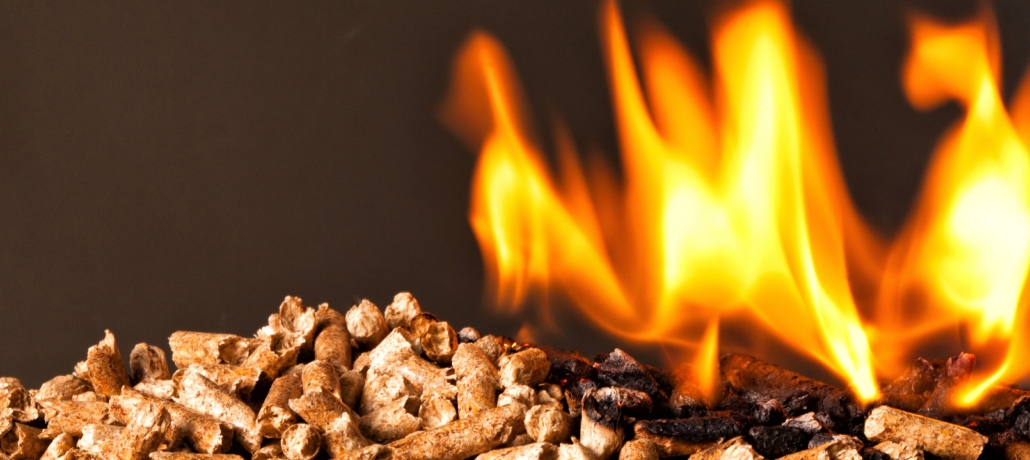Can Installing a Wood Pellet Stove Save you Money on Your Energy Bills?
At Doherty’s, our expertise in the manufacture of wood pellets means we take a vested interest in the energy sector. In Northern Ireland, almost half of domestic households use oil as their only means of central heating, with ‘gas only’ making up a further 31%. The stats are much the same when it comes to the heating types in the Republic of Ireland and you can check out our sources at the bottom of this blog.
With oil, gas and electricity prices continuing to climb and so many homes only using one type of central heating, there are plenty of opportunities to make use of more cost-effective methods that could save you money; such as wood pellet stoves. But are they worth the initial investment?
Are Wood Pellet Stoves really more efficient?
It’s all well and good to assume that wood pellets are a cheaper alternative just because they aren’t oil or gas, but in reality, it isn’t quite as simple as that. There are a variety of variables that need to be considered before costs. In terms of heat efficiency, wood pellet stoves are easily among the most efficient forms of heating with an average efficiency rating of 90%. When compared to oil or gas boiler options this is often as or more efficient than oil or gas boilers, especially older models.
In addition to offering higher burning efficiency, a wood pellet stove can help to utilise zone heating, preventing the waste of energy in spaces of the house that aren’t being used. If you have a small home, or spend much of your time in one room, wood pellet stoves are the perfect option. With only 15% of Northern Ireland using two methods of central heating and over 70% of ROI sticking to oil or gas, homeowners may be missing out on alternative energy options.
Costs: can it be cheaper?
The short answer is yes, a wood pellet stove can be cheaper than a gas or oil boiler (in the long run), but it will depend on how you use it. Take fuel for example, in this volatile market, wood pellets are one of the more consistently priced fuel types and haven’t seen ridiculous changes in price over the last few years, unlike the alternatives. If buying a high-grade wood pellet (like our ENPLUS A1 certified pellets) you can get up to 12 hours of heat from just one fill of the hopper which can keep a room heated all day if need be.
The correct kind of usage can considerably reduce waste with the help of zone heating and using the functions available on modern stoves can further increase the lifespan of fuel.
Fuel availability
Depending on where you are in the world, fuel availability can be a deciding factor and can affect pricing. Luckily if you’re in Ireland (North or South), there are plenty of suppliers around (namely us!!). You can also get wood pellets from farm shops or other speciality stores.
Convenience
Something else to consider that isn’t directly related to costs is the convenience of a wood pellet stove. While they are a more hands-on option, requiring you to fill the hopper and occasionally clean out, they are far more convenient than alternative wood stove options that require logs. Most modern wood pellet stoves can be controlled manually or via a smartphone app and can even start on their own or maintain a temperature, which can be a further bonus for your pocket.
Government grants
Given the sustainable nature of wood pellet stoves, there may be grants available depending on your location and type of home (we’re avoiding the mention of RHI, although this is still an option in England, Scotland or Wales). More information can be found on government sites as to whether any are currently running or whether you could be eligible.
So, should you invest?
It’s important to note that in a domestic setting, wood pellet stoves are rarely a substitute for other central heating systems, but can be a very complimentary bit of kit, especially in smaller homes or rooms that are always occupied. Modern options allow for a great deal of control, making them a very efficient heating device and thanks to cost-effective fuel, wood pellet stoves are certainly a worthwhile long-term investment.
Already have a wood pellet stove?
That’s great! And it means you can maximise your efficiency with our ENplus A1 certified wood pellets. To find out more about our wood pellets or get in touch, just click here.
The stats:
| Central Heating Type | Households | Percentage |
| Oil only | 380,541 | 49.5% |
| Mains gas only | 242,804 | 31.6% |
| Two or more types of central heating | 115,301 | 15.0% |
| Electric Only | 12,171 | 1.6% |
| Tank or bottled gas only | 5,888 | 0.8% |
| Solid fuel only | 4,277 | 0.6% |
| Renewable heating system only | 2,590 | 0.3% |
| No central heating | 2,430 | 0.3% |
| Other central heating only | 2,025 | 0.3% |
| Wood only | 784 | 0.1% |
Table 1: Northern Ireland Census Data – Household Central Heating Types (2021)
| Central Heating Type | Households | Percentage |
| Oil | 40.4% | |
| Natural gas | 33.5% | |
| Electricity | 8.6% | |
| Peat (Incl. Turf) | 5.3% | |
| Other | 12.1% |
Table 2: Republic of Ireland – Private Households by Type of Central Heating (2016)
Energy-saving tips
Here are a few useful resources and websites that share helpful tips on energy saving:
Northern Ireland:
https://energysavingtrust.org.uk/campaign/energy-saving-week-ni/
UK:
https://helpforhouseholds.campaign.gov.uk/energy-saving-advice/
Republic of Ireland:
https://www.gov.ie/en/campaigns/6ca43-reduce-your-use/#
Sources:
House of Commons Library – Central Heating: Census Data
Central Statistics Office Ireland – Regional SDGs Ireland 2017
Energy usage and costs vary due to a variety of factors. As a result, figures are not a guarantee of performance. It is always best to consult a professional before making any high-risk financial decision.










Leave a Reply
Want to join the discussion?Feel free to contribute!